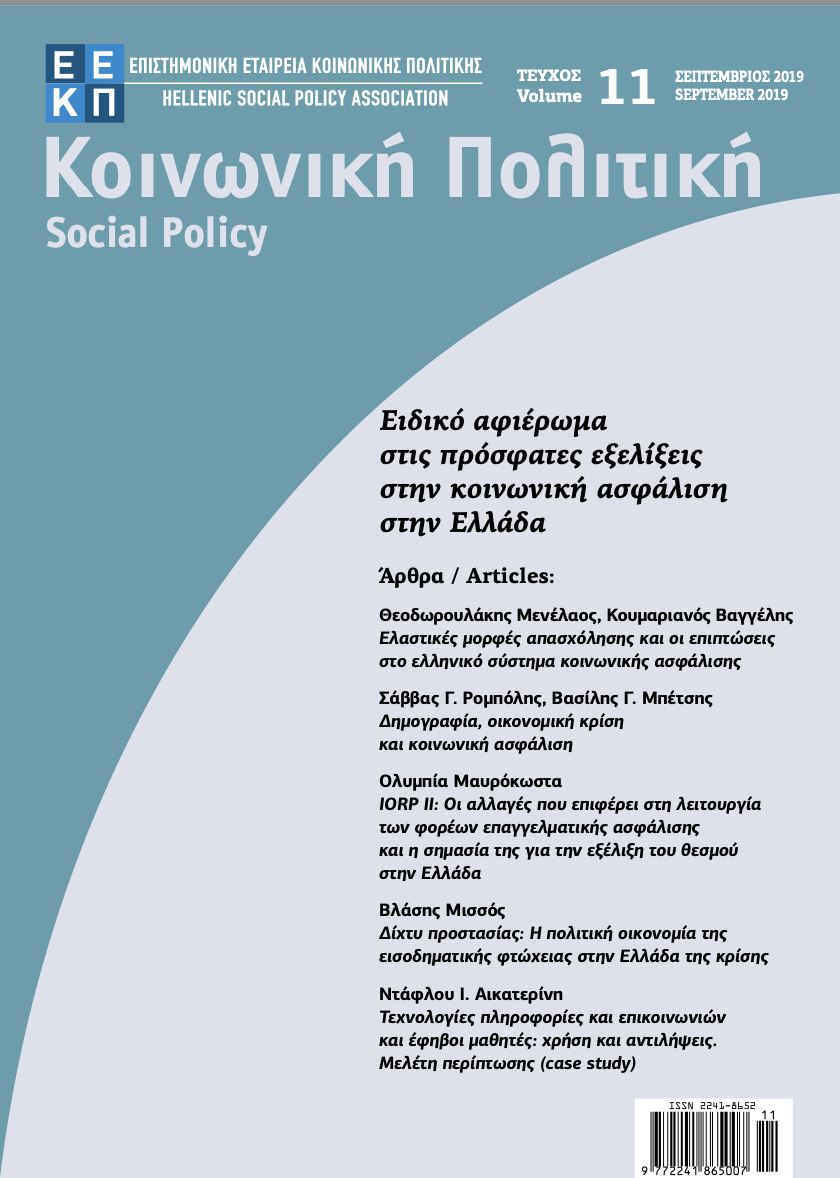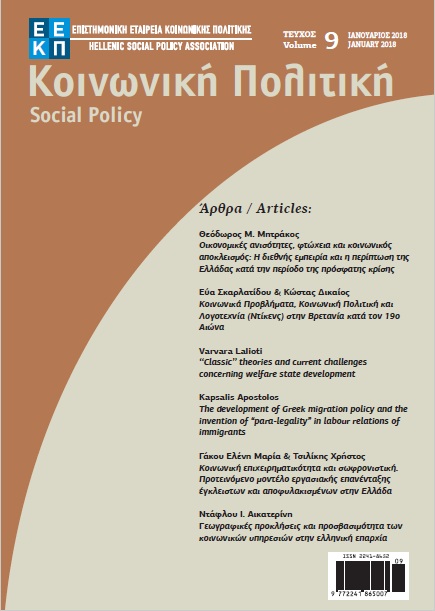Τεχνολογίες πληροφορίες και επικοινωνιών και έφηβοι μαθητές: χρήση και αντιλήψεις. Μελέτη περίπτωσης (case study)
Περίληψη
Ο 21ος αιώνας είναι μια εποχή για την οποία αναγνωρίζεται ότι η ψηφιακή τεχνολογία γίνεται όλο και περισσότερο διάχυτη, φθηνότερη και ευκολότερη στη χρήση και ενσωματώνεται στην καθημε- ρινότητα όλων, μικρών και μεγάλων. Τα παιδιά αποκτούν από πολύ νωρίς τεχνολογική εμπειρία σε μια παγκόσμια κοινωνία όπου τα μέσα κοινωνικής δικτύωσης και οι διαδικτυακές κοινότητες εί- ναι ουσιαστικές για τον τρόπο που επικοινωνούν, μαθαίνουν και αναπτύσσονται. Το παρόν άρθρο αναλύει τη χρήση ψηφιακών εργαλείων από Έλληνες εφήβους και συγκεκριμένα επικεντρώνεται στη χρήση των τεχνολογιών κινητών τηλεφώνων, στον επικοινωνιακό προβληματισμό και στη δι-αδικασία μάθησης με τη χρήση των τεχνολογιών πληροφορικής και επικοινωνιών. Με την έρευ- να διαπιστώθηκαν αφενός σχετικά υψηλά ποσοστά χρήσης ψηφιακών εργαλείων με σκοπό την επικοινωνία και τη χρήση συγκεκριμένων εφαρμογών και αφετέρου υπογραμμίστηκε η σταθερή επιθυμία των νέων για εκπαίδευση με τη φυσική παρουσία των δασκάλων.
Λεπτομέρειες άρθρου
- Πώς να δημιουργήσετε Αναφορές
-
Ντάφλου Α. (2021). Τεχνολογίες πληροφορίες και επικοινωνιών και έφηβοι μαθητές: χρήση και αντιλήψεις. Μελέτη περίπτωσης (case study). Κοινωνική Πολιτική, 11, 97–112. https://doi.org/10.12681/sp.29018
- Τεύχος
- Τόμ. 11 (2019)
- Ενότητα
- Άρθρα

Αυτή η εργασία είναι αδειοδοτημένη υπό το CC Αναφορά Δημιουργού 4.0.
Οι συγγραφείς των άρθρων που δημοσιεύονται στο περιοδικό διατηρούν τα δικαιώματα πνευματικής ιδιοκτησίας επί των άρθρων τους, δίνοντας στο περιοδικό το δικαίωμα της πρώτης δημοσίευσης. Άρθρα που δημοσιεύονται στο περιοδικό διατίθενται με άδεια Creative Commons 4.0 και σύμφωνα με την άδεια μπορούν να χρησιμοποιούνται ελεύθερα, με αναφορά στο/στη συγγραφέα και στην πρώτη δημοσίευση για μη κερδοσκοπικούς σκοπούς και με δικαίωμα τροποποίησης μόνον με παρόμοια διανομή (αν αναμείξετε, τροποποιήσετε, ή δημιουργήσετε πάνω στο υλικό, πρέπει να διανείμετε τις δικές σας συνεισφορές υπό την ίδια άδεια όπως και το πρωτότυπο).




